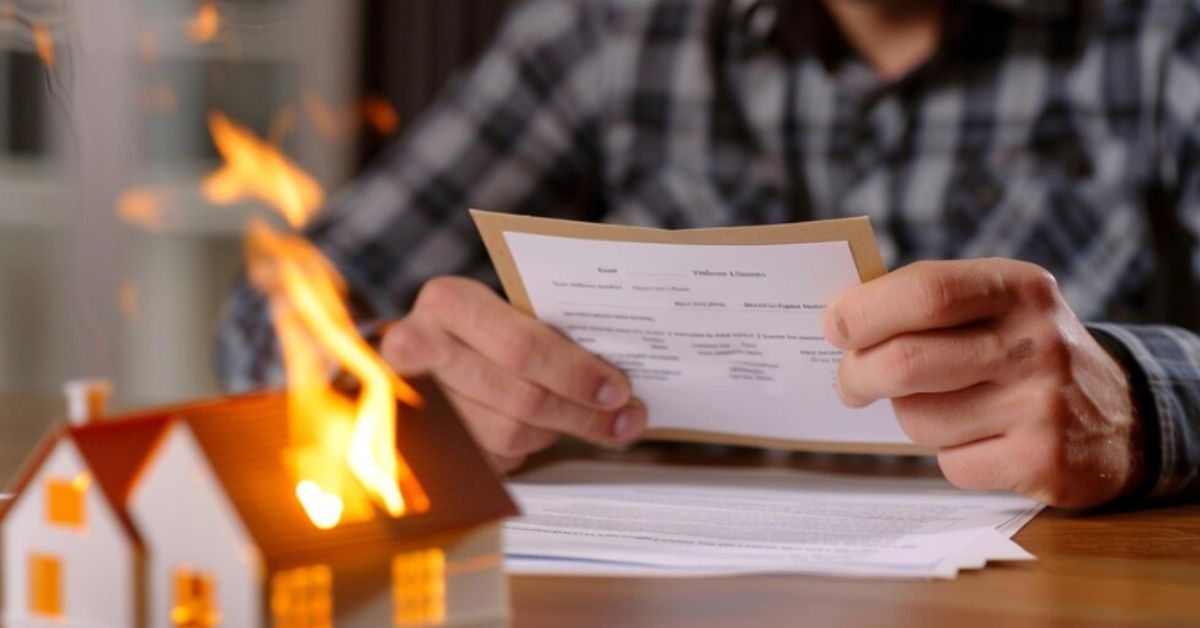House fires can overwhelm homeowners with the damage and the daunting process of filing insurance claims. Navigating this process requires careful documentation to ensure your claim is processed accurately and promptly. Knowing which documents to gather and how to organize them can significantly ease the process, leading to a smoother recovery. We will explore the essential documents you need when filing a house fire insurance claim, highlighting why each is important and how to present them effectively. We will help you navigate how to file a fire damage insurance claim quickly and confidently during a challenging time.
Initial Damage Assessment and Photographic Evidence
The first step after a house fire is to document the damage comprehensively. Start by taking clear photographs and videos of the affected areas, capturing all structural damage, furniture, personal belongings, and other impacted property. Ensure the images are detailed enough to show the extent of the damage. Videos also provide a real-time overview of the fire’s impact. This visual evidence serves as the foundation for your insurance claim, helping adjusters assess the scope of your losses.
Capturing images before any cleanup or repairs begin ensures an accurate representation of the damage. Keep these files backed up digitally to prevent loss, and organize them by room or category for easier reference. Additionally, writing a summary to accompany each photo or video can help clarify what is being documented. This approach ensures that nothing is overlooked and strengthens your case during the evaluation process.
Insurance Policy and Contact Records
A critical document in your claim process is your insurance policy. It outlines the coverage limits, deductibles, and specific exclusions relevant to fire damage. A clear understanding of your policy can help you advocate for yourself during the claims process. Locate a physical or digital copy of your policy and review it to familiarize yourself with the terms and conditions.
In addition to your policy, keep a record of all communication with your insurance provider. This includes emails, letters, and notes from phone calls detailing the date, time, and topics discussed. Maintaining this record can help resolve disputes or misunderstandings that may arise. Create a dedicated physical or digital folder to store your policy documents and communication records, ensuring they are easily accessible when needed.
Inventory of Damaged and Lost Items
An inventory of the items damaged or lost in the fire is another critical component of your claim. List each item’s description, purchase date, original cost, and estimated current value. Provide receipts, credit card statements, or photographs to substantiate ownership and value if possible.
Provide as much detail as possible for items without documentation to support your claim. Categorize the inventory by room or type of item to make it easier for the insurance adjuster to review. Digital tools and apps designed to create home inventories can streamline this process. A comprehensive inventory demonstrates the full extent of your losses, increasing the likelihood of fair compensation.
Receipts for Temporary Living Expenses
Your insurance policy may cover additional living expenses (ALE) if a fire renders your home uninhabitable. This coverage typically includes costs for temporary housing, meals, and other necessary expenses incurred during the restoration period. Keep detailed records of these expenses, including receipts, invoices, and bank statements.
Organize your receipts by category, such as lodging, food, transportation, and other essentials, and track these expenses in a spreadsheet for clarity. Providing this documentation ensures you are reimbursed for eligible costs and helps prevent delays in processing your claim. Ensure that all receipts indicate the date and purpose of the expense to avoid any confusion.
Fire Department and Incident Reports
Official fire department reports are valuable documents supporting your insurance claim. These reports typically include details about the fire’s cause, the damage’s extent, and any relevant observations from first responders. Request a copy of the incident report as soon as it is available, and keep it with your other claim-related documents.
Fire department reports carry significant weight as they are impartial and authoritative accounts of the event. They can also help clarify any questions your insurance adjuster may have about the fire’s circumstances. Review the report for accuracy and request corrections if any discrepancies are identified.
Contractor Estimates and Repair Bids
As you plan for repairs, obtain estimates from licensed contractors to determine the cost of restoring your home. Insurance providers often require multiple estimates to ensure the proposed costs are reasonable and competitive. Request detailed bids that outline labor, materials, and any additional expenses.
These estimates help the insurance adjuster assess the validity of your claim and determine the settlement amount. Keep copies of all estimates and related correspondence for reference. If your insurer provides a preferred vendor list, ensure you understand the conditions of using those contractors. Comprehensive repair estimates can expedite the approval process and clarify what to expect financially.
Filing a house fire insurance claim requires meticulous documentation and organization to ensure a fair and efficient process. Each document plays a crucial role in substantiating your claim, from photographic evidence and inventory lists to official reports and repair estimates. We have explored how these documents work together to streamline communication with your insurance provider and support your recovery journey. Taking the time to gather and organize the necessary documents not only helps secure adequate compensation but also provides clarity and confidence during a challenging time. With proper preparation, navigating the insurance claim process becomes a manageable step toward restoring your home and life.
ALSO READ: The Importance of Jewelry Appraisals for Insurance and Resale Value

